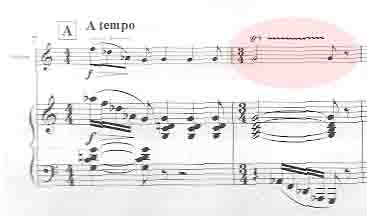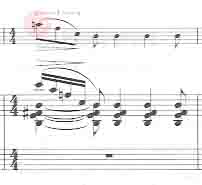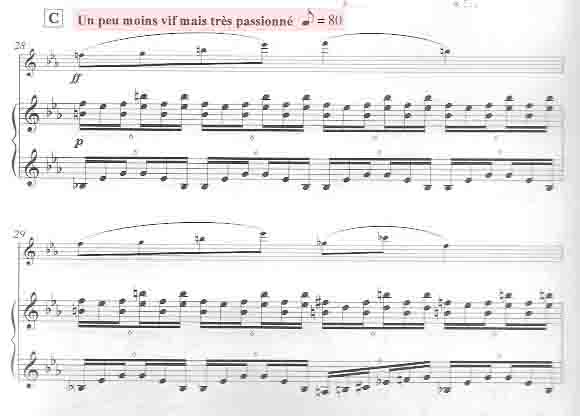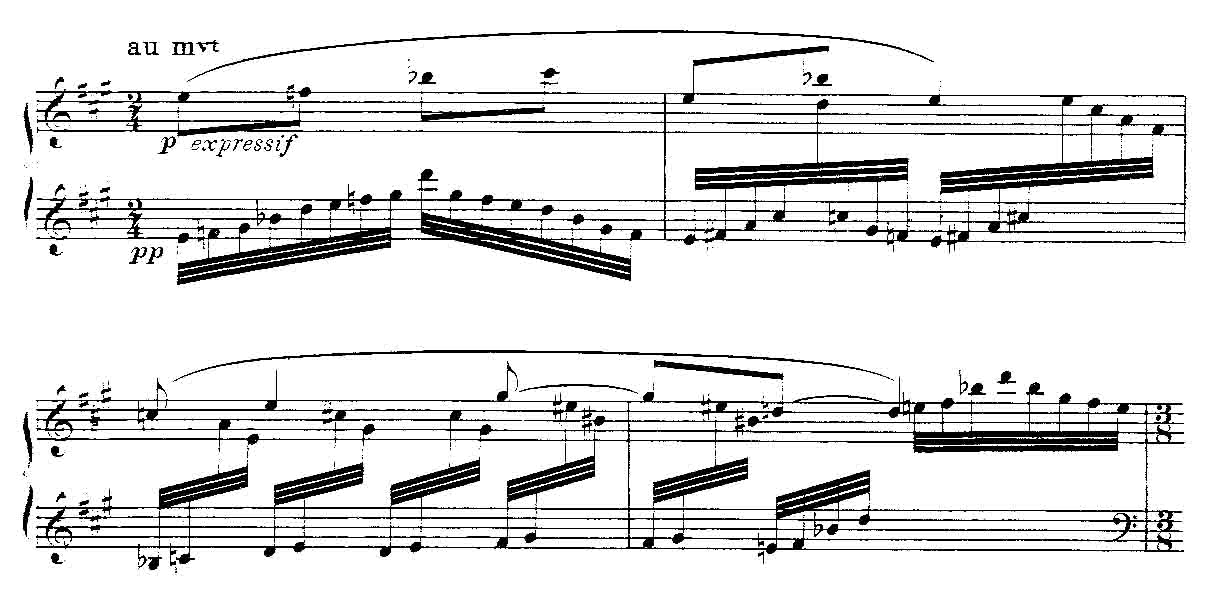
Notes on the newly published score of Olivier Messiaen's Fantaisie for violin and piano (1933)
Last year, in 2007, Editions Durand published the Fantaisie for violin and piano by Olivier Messiaen. Messiaen wrote this complex, robust and ecstatic work for his first wife, the violinist and composer Claire Delbos, in Paris in 1933. Not just violinists, whose Messiaen repertory doubled with this publication, but the whole music-loving world is profoundly indebted to Durand and Messiaen's widow, Yvonne Loriod-Messiaen, for this extraordinary posthumous contribution to the Messiaen catalogue.
Between October 2007 and April 2008, I performed the work in Boston (the US premiere, with pianist Luke Berryman), in New York (with Melvin Chen), in San Francisco and in Los Angeles (both with Steven Vanhauwaert). Video of the San Francisco and LA premieres is online here. In May, the posting to YouTube of another interpretation of the Fantaisie reminded me that I had meant to post a few observations about the score, in hopes they might be helpful for other violinists and pianists approaching this beautiful work.
Taking them in order of appearance, my first departure from the score is in the 8th measure, in a figure that repeats itself another 13 times in the piece. I won't speculate on whether Messiaen intended the eighth note to be articulated at the end of that bar in a separate bow, as the score has it. But for two reasons I decided it should be tied to the preceding half note. First, it is most closely analogous to what the piano has in the right hand, where the eighth note is tied. Second, I could never get that reiteration of the note to sound anything but clunky - it calls attention to itself when the interesting movement is in the piano left hand. I might one day be persuaded otherwise, but at this point I think the figure comes off much more convincingly if it's tied.

In the 11th measure, the violin part has the first note as an A-flat - surely a typo. In the score, it's an A-natural.

My most significant departure from the score comes in the great soaring second subject at C (measure 28), which is brought back at K (measure 118). Messiaen's direction is "Un peu moins vif mais tres passionne" (a little less fast but very impassioned). But there is nothing "un peu moins vif" about the metronome marking, eighth = 80. Coming from "vif," with a metronome marking of quarter = 108, the new marking is more than twice as slow!
Four reasons convince me that this must be quarter = 80, not eighth = 80. First is to make sense of "un peu moins vif." Second is that the phrase/bow markings are absolutely impossible to execute fortissimo at that tempo - and Messiaen, writing this for Delbos, would have known that. Third, while Messiaen was certainly willing to write extremely slow and ecstatic melodic lines for the violin (see the violin and piano "Louange" from Quartet for the End of Time), the piano notes here are clearly meant to fly by in an impressionistic wash. At eighth = 80, they plod somnambulistically.

A very close analogy is with the last of the Op. 1 piano preludes, "Un reflet dans le vent" (a reflection in the wind):

The last and, if not best, then certainly most deeply felt piece of evidence against eighth = 80 is that Luke Berryman and I played it at that tempo in Boston. I split the bows and played it with as much conviction as I could muster, and when we were done the audience was palpably stupefied. Comments afterward indicated that people - whatever they thought of the performance - were unimpressed with the piece. In New York, San Francisco and Los Angeles we played it quarter = 80. People went bananas.
paulfesta.com
Apparition of the Eternal Church (my Messiaen film)
OH MY GOD: Messiaen in the Ear of the Unbeliever (my book based on the film)